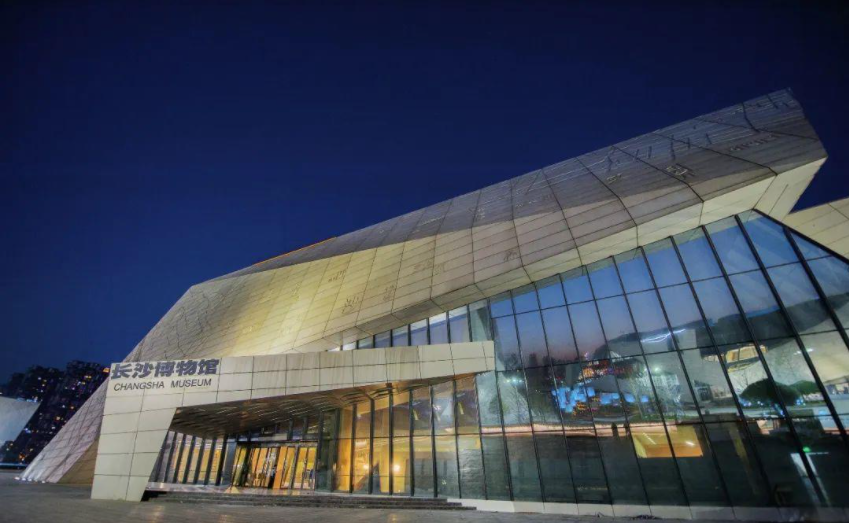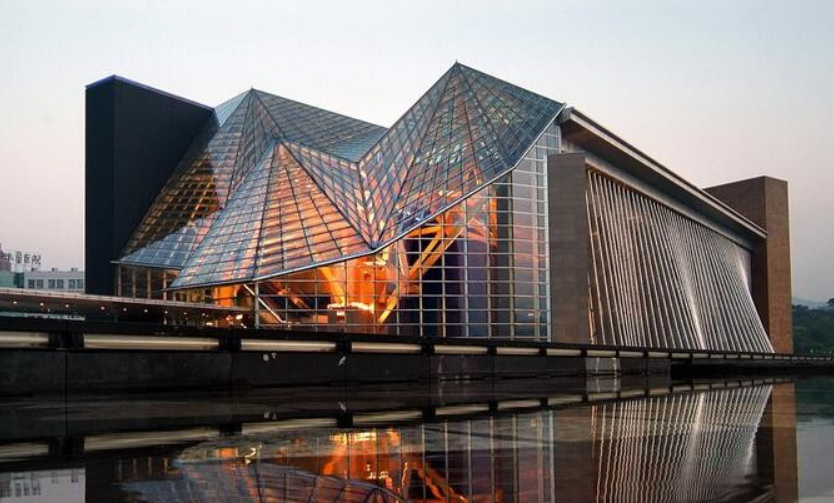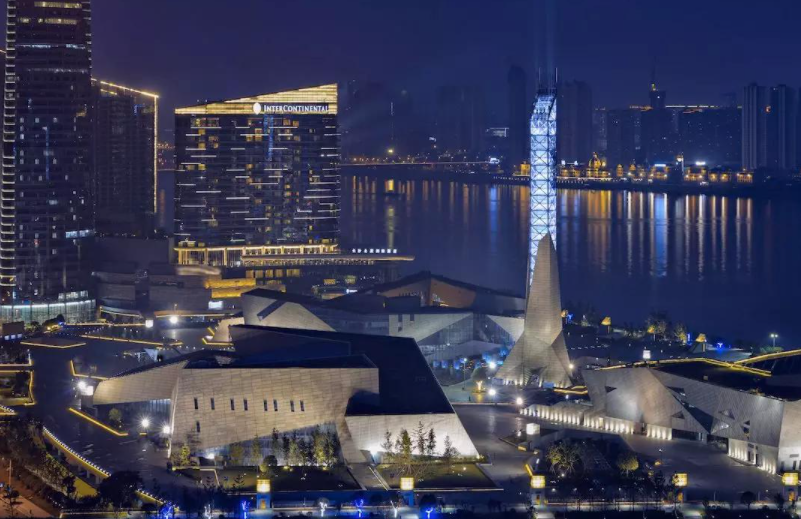Changsha Binjiang Cultural Park
Changsha Binjiang (Riverside) Cultural Park is a national AAAA tourist attraction.
Changsha Binjiang Cultural Park is located in the Xinhe Delta where Xiangjiang River and Liuyang River meet, with an area of 32.29 acres and a construction area of 150,000 square meters. There are several landmarks Changsha Library, Changsha Museum, Changsha Planning Exhibition Hall, Changsha Concert Hall, and a landscape tower in the park.

The overall building of the park resembles piles of sand and gravel eroded by the river. Standing majestically at the confluence of Xiangjiang River and Liuyanghe River, it is the embodiment of innovation and initiative; its tough shape is the reflection of righteousness, perseverance and braveness; its bold and vigorous lines echo heroic spirit, romance, simplicity and sincerity.

As a professional cultural building complex, Changsha Binjiang Cultural Park, which integrates book reading, cultural relics collection, planning exhibition and music performance, aims to be the first-class cultural park in China that is in line with international standards and represents the cultural identity of Hunan Province.

Since its full opening on December 28, 2015, the park has been well received by the citizens, visitors and people of all sectors, as it is a place of wisdom, culture, beauty and music. At present, 8.39 million tourists from all over the world have visited the park.

The park has carried out thousands of colorful cultural activities which have been reported more than 2,200 times by the central and provincial mainstream media, and has been rated as Changsha Civilized Model Unit, Changsha Cultural Tourism Demonstration Base, Changsha Garden-like Unit, Changsha Smoke-free Unit, and Changsha Hygienic Civilized Unit.

Changsha Binjiang Cultural Park is committed to building an international cultural landmark, which will be a robust boost for the leapfrog development of Changsha’s cultural construction and international influence.
Edited by Li Ling

 Print
Print


